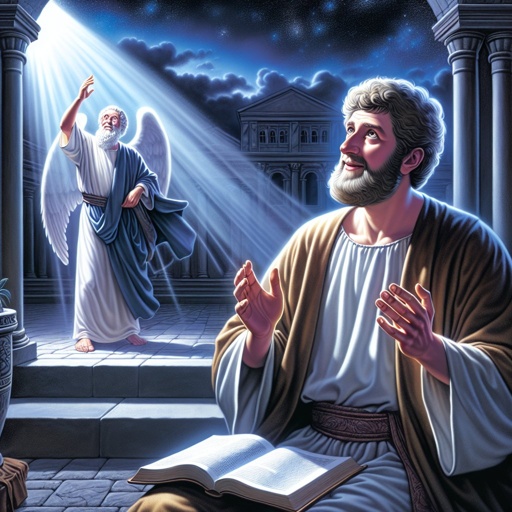Isaiah’s Vision Artwork
"The vision of Isaiah the son of Amoz, which he saw concerning Judah and Jerusalem in the days of Uzziah, Jotham, Ahaz, and Hezekiah, kings of Judah." - Isaiah 1:1
Explore Isaiah’s Vision through paintings, pictures, drawings, digital art, illustrations, wallpapers, photos, prints & more.

Isaiah 39:5 - "Then said Isaiah to Hezekiah, Hear the word of the LORD of hosts:"

Isaiah 51:2 - "Look unto Abraham your father, and unto Sarah that bare you: for I called him alone, and blessed him, and increased him."

Ezekiel 43:3 - "And it was according to the appearance of the vision which I saw, even according to the vision that I saw when I came to destroy the city: and the visions were like the vision that I saw by the river Chebar; and I fell upon my face."

Daniel 8:26 - "And the vision of the evening and the morning which was told is true: wherefore shut thou up the vision; for it shall be for many days."

Daniel 10:7 - "And I Daniel alone saw the vision: for the men that were with me saw not the vision; but a great quaking fell upon them, so that they fled to hide themselves."

Daniel 8:2 - "And I saw in a vision; and it came to pass, when I saw, that I was at Shushan in the palace, which is in the province of Elam; and I saw in a vision, and I was by the river of Ulai."

Ezekiel 37:1-10 – The vision of the valley of dry bones.

Ezekiel 11:24 - "¶ Afterwards the spirit took me up, and brought me in a vision by the Spirit of God into Chaldea, to them of the captivity. So the vision that I had seen went up from me."

Ezekiel 1:4-28 – The vision of the four living creatures and the wheels.

Ezekiel 1:4-28 – The vision of the four living creatures and the wheels.

Ezekiel 1:4-28 – The vision of the four living creatures and the wheels.

Ezekiel 37:1-10 – The vision of the valley of dry bones.

Acts 9:12 - "And hath seen in a vision a man named Ananias coming in, and putting his hand on him, that he might receive his sight."

Ezekiel 8:4 - "And, behold, the glory of the God of Israel was there, according to the vision that I saw in the plain."

2 Corinthians 12:2-4 – Paul’s vision of the third heaven.

Ezekiel 1:4-28 – The vision of the four living creatures and the wheels.

Nahum 1:1 - "The burden of Nineveh. The book of the vision of Nahum the Elkoshite."

Ezekiel 1:4-28 – The vision of the four living creatures and the wheels.

Isaiah 22:1 - "The burden of the valley of vision. What aileth thee now, that thou art wholly gone up to the housetops?"

Proverbs 29:18 - "Where there is no vision, the people perish: but he that keepeth the law, happy is he."

REVELATION 4:8

Hosea 12:10 - "I have also spoken by the prophets, and I have multiplied visions, and used similitudes, by the ministry of the prophets."

Numbers 24:4 - "He hath said, which heard the words of God, which saw the vision of the Almighty, falling into a trance, but having his eyes open:"

Acts 9:10 - "¶ And there was a certain disciple at Damascus, named Ananias; and to him said the Lord in a vision, Ananias. And he said, Behold, I am here, Lord."

Acts 26:19 - "Whereupon, O king Agrippa, I was not disobedient unto the heavenly vision:"

Acts 18:9 - "Then spake the Lord to Paul in the night by a vision, Be not afraid, but speak, and hold not thy peace:"

Daniel 2:19 - "¶ Then was the secret revealed unto Daniel in a night vision. Then Daniel blessed the God of heaven."

Ezekiel 1:1-28

Habakkuk 2:2-3 - "And the Lord answered me, and said, Write the vision, and make it plain upon tables, that he may run that readeth it. For the vision is yet for an appointed time, but at the end it shall speak, and not lie: though it tarry, wait for it; because it will surely come, it will not tarry."

Job 4:13 - "In thoughts from the visions of the night, when deep sleep falleth on men,"